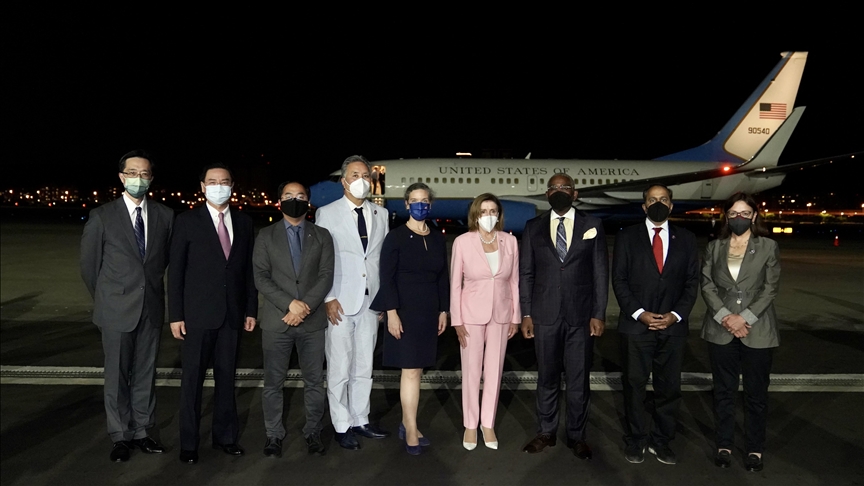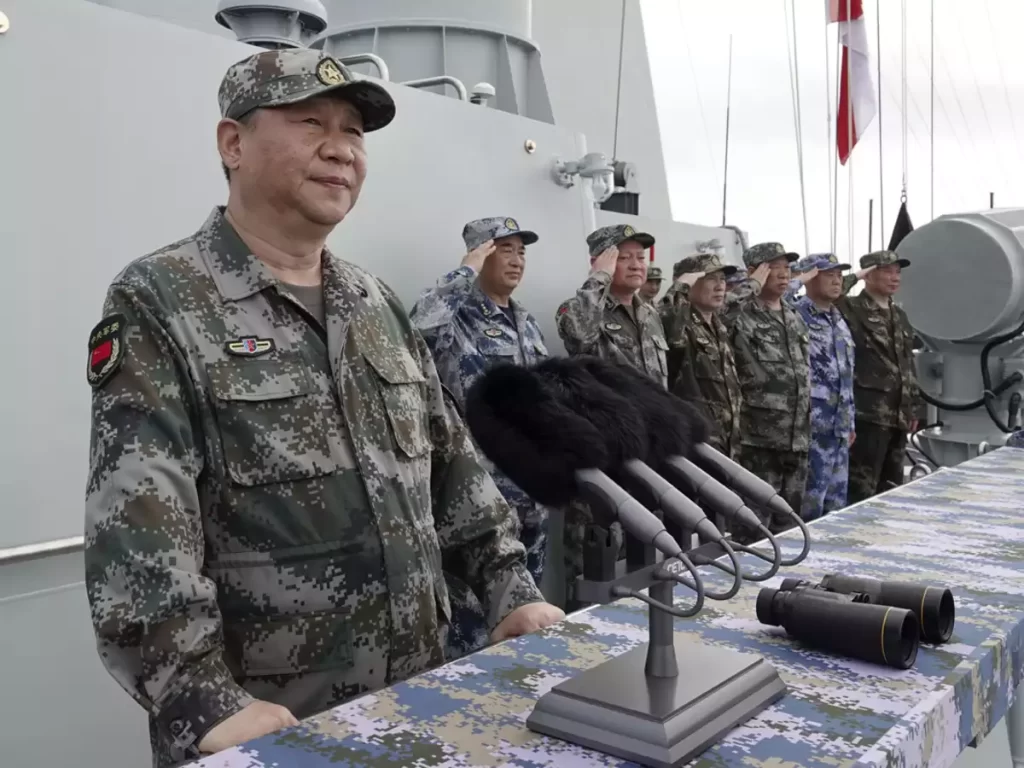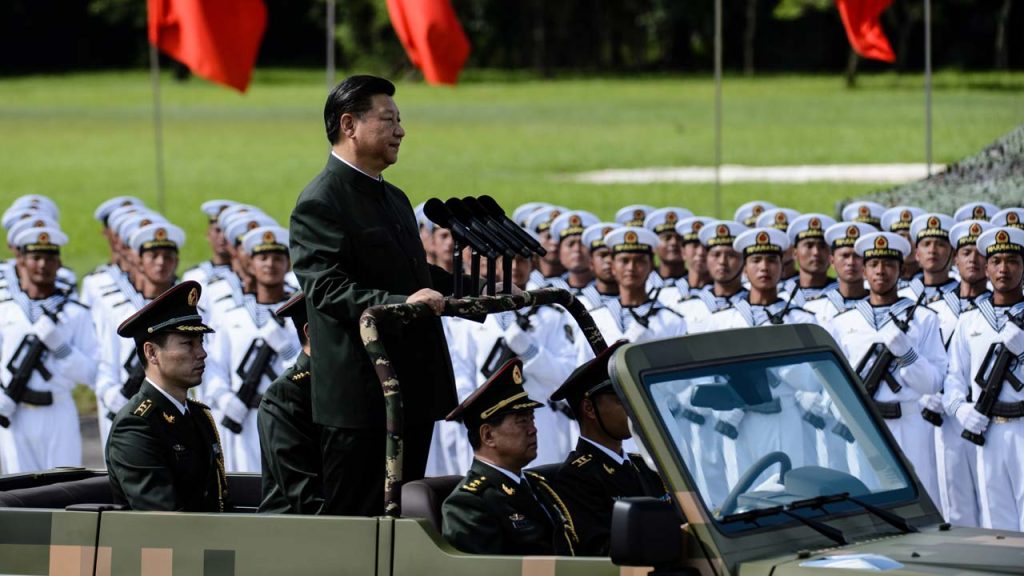

In China, the emergence of the leadership of President Xi Jinping in 2012 threw up a leader who will proffer performance above pronouncements; expertise, and competence instead of title and position.
Xi Jinping’s leadership has pioneered bold and innovative initiatives towards national development beyond seeking handouts and aid; offering compassionate hands to their people instead of the strong dictatorship and control prevalent in previous years.
Xi has consistently articulated his vision of the Chinese dream which seeks to achieve greater rejuvenation of the Chinese nation and restore China’s historical influence and status by transforming China into a rich, strong, and fully-developed power.
The expansion of China’s military capabilities is also a huge aspect of Xi’s dream. The Chinese government under Xi has specifically tasked the People’s Liberation Army (PLA) to complete military reform and modernization by 2035, to become a world-class military by 2050.
The vision is the transformation of all institutions, including the military, to their highest levels of performance and achievement. This is to be achieved through training and deployment using the spheres of social responsibility, integrity, compassion and excellence.
Any agitated analysts suspecting that China’s desire to modernise its army was for territorial expansion must have realised by now that such is the last thing in the mind of leader Xi Jinping. From its foundation in 1949, the People’s Republic of China (PRC) has never started any war or conflict. The country has grown from a relatively poor country into the world’s second-largest economy not by engaging in military expansion or colonial plunder like other world economic powers.
Growth and development have come through the hard work of its people and its efforts to maintain peace.
The development of China’s national security aims, has always been clearly spelt out to meet its rightful security needs and contribute to the growth of the world’s peaceful forces.
Such contributions include non-war military activities that are carried out abroad, involving foreign militaries. Sometimes it requires establishing coordinated and cooperative relationships with the civilian and military departments of other countries or with international organisations.
Such missions could include counterterrorism, protecting China’s citizens’ rights and interests abroad, disaster relief, security alerts, international peacekeeping, and rescue operations.
Only a well-trained military in non-war activities can sustain an excellent image for the military and the country. This explains the enhancement of the Chinese military’s peacetime activities since Xi came to power in 2012.
The Chinese Academy of Military Science declared in its 2013 presentation that non-war military activities were an important strategic means for achieving the nation’s political intention and an “effective means for supporting the expansion of interests.”

“Defeating the enemy’s troops without fighting is the supreme state of military conflict,” it said.
It was a matter of time before the framework put in place by Xi Jingpin was called to action. In March 2015, during the current endless civil war in Yemen, in a first-time move, China’s People’s Liberation Army (PLA) Navy fleet pulled out from an escort mission in the Gulf of Aden near Somalia to assist in evacuation operations in Yemen. The warships effectively evacuated over 600 Chinese citizens and 280 foreign citizens, demonstrating China’s growing capacity and desire to protect its overseas assets. This unveiled a new landmark for the country.
China has remained consistent in its policy of non-interference. In the last two decades, however, with global tensions heating up, China’s growing global investments and the increasing number of Chinese citizens traveling and working abroad, there has been a significant shift in actions taken by China in the interest of its overseas citizens.
Another situation occurred in February 2011, when Muammar Gaddhafi’s regime in Libya stood on the brink of collapse. Both the PLA Navy (PLAN) and the PLA Air Force (PLAAF) faced the herculean task of evacuating over thirty-five thousand Chinese nationals from Libya. This marked an important turning point for the PLA.
The PLAN had to summon its frigate, Xuzhou, which was part of a flotilla off the Gulf of Aden protecting Chinese vessels and personnel sailing through the Somali waters. The involvement of Xuzhou set a new precedent and attracted the attention of scholars and defence analysts inside and outside of China. Some claimed that “the move reflected an array of strategic interests for Beijing—and could prove to be the first of many such missions.”
The Xuzhou, which had special forces troops, a Z-9 helicopter, hangar, and a “store of surface-to-air missiles” lacked the capacity to transport the evacuees. Instead, it escorted merchant ships tasked with rescuing Chinese civilians while remaining alert for any significant increase in the threat level.
In addition to the PLAN, the air wing, PLAAF also contributed to the evacuation efforts in Libya. The distance between the airfield in which the PLAAF regiment was located and Sabha, Libya, was more than 9,500 km (5,903 miles). It was the longest flight path ever taken by the PLAAF and it spurred a new way of thinking about building battle effectiveness.
China’s 2013 defence white paper shared more details on the role of the air force, explaining that “the PLAAF sent four aircraft at short notice, flew forty sorties, evacuated 1,655 people (including 240 Nepalese) from Libya to Sudan, and took 287 Chinese nationals from Sudan back home.”
The White Paper further states, “vessel protection at sea, evacuation of Chinese nationals overseas, emergency rescue and peace-keeping operations have become important ways and means for the PLA to safeguard national interests and fulfill China’s international obligations.”
The 2011 evacuation from Libya was truly a milestone. Not only was it the biggest evacuation effort in which China had participated, but it drew attention to the growing importance of these types of operations.
International UN peacekeeping missions have been another area of operation that the PLA has done remarkably well.China has been a regular contributor to UN peacekeeping missions for more than twenty-five years. Since 1990, about forty thousand Chinese peacekeepers have served in more than 29 peacekeeping missions around the world, with the highest concentration here in Africa.
Recent peace-making missions indicate an even more dramatic shift toward deeper involvement of its forces. For example, on 26 March 2015, China sent a peacekeeping infantry battalion to Juba, South Sudan. This commitment to armed and more capable personnel set a new standard and marked a profound shift in the country’s attitude toward UN peacekeeping missions. Since Chinese peacekeepers are drawn from a pool of some of the most qualified members of the PLA, these forces are an excellent source of support for evacuation operations if needed.

With so many external operations, the relevance of an overseas military base for China is self-evident.In 2013, the National Defence University of the PLA submitted a proposal to the Central Military Commission (CMC) to build a military base in Djibouti. Approved by President Xi Jinping and operational in 2017, this marks China’s first overseas military base.
According to various Chinese sources, when China first began conducting escort missions in the Gulf of Aden, the ships and their crews received no breaks, remaining at sea for six months straight. This caused depression and mental anguish amongst Chinese sailors. The base in Djibouti gives Chinese ships a port to freely access, whenever it is needed to improve personnel morale. It also meets the logistical needs of the task force and the supply ships that transport goods to the ships.
Escort missions in the Gulf of Aden are other vital roles handled by the modernised PLA in the interest of world peace.The PLAN has been conducting escort missions in the Gulf of Aden since late 2008 as part of the UN’s antipiracy operations.
The first fleet assigned to the mission consisted of two destroyers and one supply ship originating from China’s Hainan Island. Onboard were approximately eight hundred crew members, including seventy soldiers from the Navy’s special forces.
The destroyers were equipped with missiles, cannons, and light weapons. Since that period, the PLAN has had a task force in place to conduct naval escort missions. It launched its twenty-third mission as far back as 7 April 2016. Obviously, the escort operation has expanded massively.
It is obvious that the PLA’s responsibilities today have gone beyond the scale of guarding Chinese territories. The PLA must protect China’s interests anywhere in the world. Overseas military bases will provide cutting-edge support for China to guard its growing overseas interest and facilitate other global peacekeeping responsibilities.
These are signs of a new trend of China’s extended overseas military presence in the years to come. It is equally consolidating China’s perception of its transitioning role and what we should expect in the future based on its involvement in overseas evacuations and peacekeeping activities over the last few decades.

